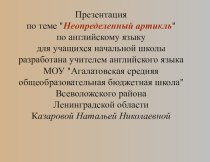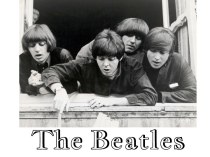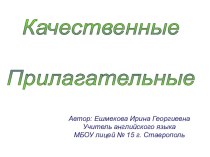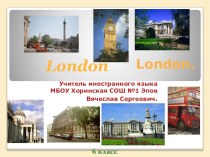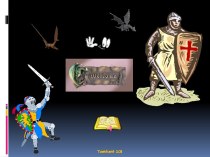- Главная
- Разное
- Бизнес и предпринимательство
- Образование
- Развлечения
- Государство
- Спорт
- Графика
- Культурология
- Еда и кулинария
- Лингвистика
- Религиоведение
- Черчение
- Физкультура
- ИЗО
- Психология
- Социология
- Английский язык
- Астрономия
- Алгебра
- Биология
- География
- Геометрия
- Детские презентации
- Информатика
- История
- Литература
- Маркетинг
- Математика
- Медицина
- Менеджмент
- Музыка
- МХК
- Немецкий язык
- ОБЖ
- Обществознание
- Окружающий мир
- Педагогика
- Русский язык
- Технология
- Физика
- Философия
- Химия
- Шаблоны, картинки для презентаций
- Экология
- Экономика
- Юриспруденция
Что такое findslide.org?
FindSlide.org - это сайт презентаций, докладов, шаблонов в формате PowerPoint.
Обратная связь
Email: Нажмите что бы посмотреть
Презентация на тему Elizabeth I of England
Содержание
- 2. Early life
- 3. Elizabeth I (7 September 1533 – 24
- 4. The daughter of Henry VIII, she was
- 5. Edward VI Mary I
- 6. Elizabeth's first Lady Mistress, Margaret, Lady Bryant,
- 7. Accession AccessionElizabeth I in her coronation robes, patterned with Tudor roses and trimmed with ermine.
- 8. As her triumphal progress wound through the
- 9. The first moves . Elizabeth set out
- 10. Marriage question From the start of Elizabeth's
- 11. Marriage question…Elizabeth and her favourite, Robert Dudley,
- 12. In government, Elizabeth was more moderate than
- 13. Wars and overseas trade Half Groat of
- 14. Wars and overseas trade Ivan the Terrible
- 15. The Elizabethan era Elizabeth's reign is known
- 16. Some historians are more reserved in their
- 17. Death Elizabeth I. The "Rainbow Portrait", c. 1600,
- 18. The Queen's health remained fair until the
- 19. Скачать презентацию
- 20. Похожие презентации
Early life
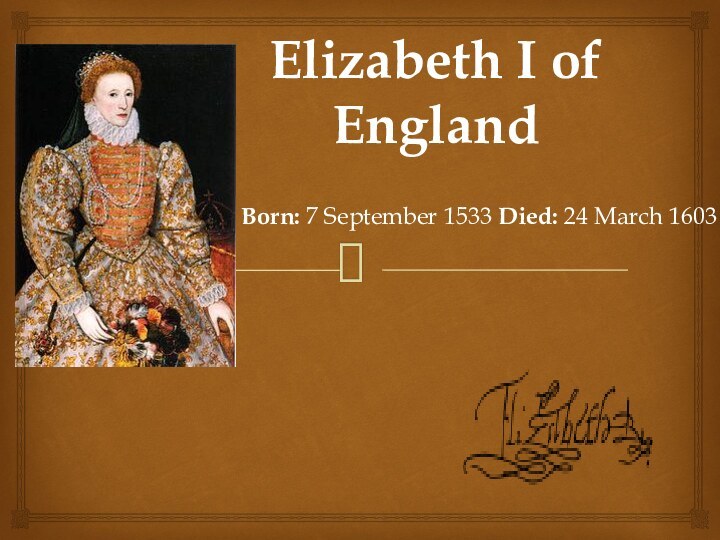






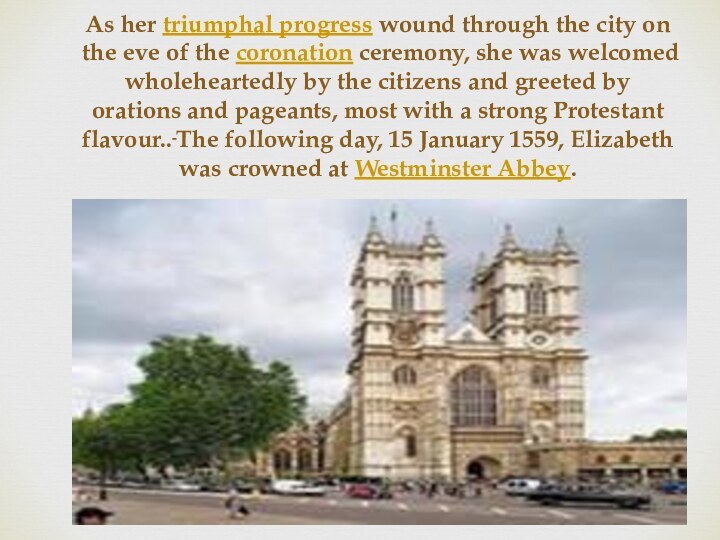
![Elizabeth I of England The first moves . Elizabeth set out to rule by good counsel,[1]](/img/tmb/12/1148239/25f4e5fe7444c5d22647cc0f40d1d4ee-720x.jpg)



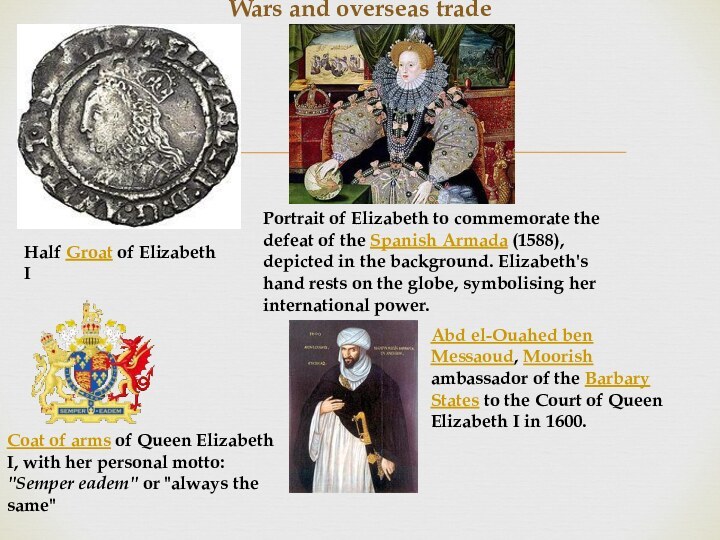


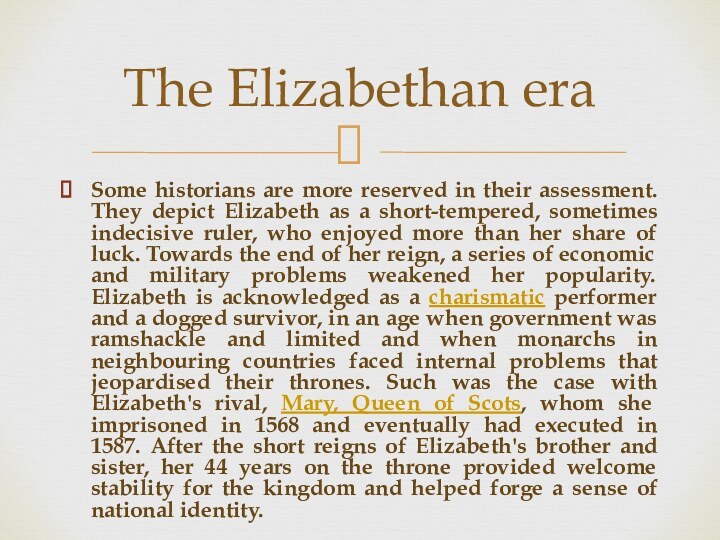



Слайд 4 The daughter of Henry VIII, she was born
a princess, but her mother, Anne Boleyn, was executed
two and a half years after her birth, and Elizabeth was declared illegitimate.Слайд 6 Elizabeth's first Lady Mistress, Margaret, Lady Bryant, wrote
that she was "as toward a child and as
gentle of conditions as ever I knew any in my life». Elizabeth taught four languages: French, Flemish, Italian and Spanish. By the time William Grindal became her tutor in 1544, Elizabeth could write English, Latin, and Italian. Under Grindal, a talented and skilful tutor, she also progressed in French and Greek. By the time her formal education ended in 1550, she was one of the best educated women of her generation.Education
Слайд 7
Accession
Accession
Elizabeth I in her coronation robes, patterned
with Tudor roses and trimmed with ermine.
Слайд 8 As her triumphal progress wound through the city
on the eve of the coronation ceremony, she was
welcomed wholeheartedly by the citizens and greeted by orations and pageants, most with a strong Protestant flavour.. The following day, 15 January 1559, Elizabeth was crowned at Westminster Abbey.
Слайд 9
The first moves
. Elizabeth set out to
rule by good counsel,[1] and she depended heavily on
a group of trusted advisers led by William Cecil, Baron Burghley. One of her first moves as queen was the establishing of an English Protestant church, of which she became the Supreme Governor. This Elizabethan Religious Settlement later evolved into today's Church of England. It was expected that Elizabeth would marry and produce an heir so as to continue the Tudor line. She never did, however, despite numerous courtships. As she grew older, Elizabeth became famous for her virginity, and a cult grew up around her which was celebrated in the portraits, pageants, and literature of the day.
Слайд 10
Marriage question
From the start of Elizabeth's reign,
it was expected that she would marry and the
question arose whom. She never did, although she received many offers for her hand; the reasons for this are not clear. Historians have speculated that Thomas Seymour had put her off sexual relationships, or that she knew herself to be infertile. She considered several suitors until she was about fifty. Her last courtship was with François, Duke of Anjou, 22 years her junior. While risking possible loss of power like her sister, who played into the hands of King Phillip II of Spain, marriage offered the chance of an heir. However, the choice of a husband might also provoke political instability or even insurrection.
Слайд 11
Marriage question…
Elizabeth and her favourite, Robert Dudley, Earl
of Leicester, c. 1575.The Queen's friendship with Dudley lasted for
over thirty years, until his death.Слайд 12 In government, Elizabeth was more moderate than her
father and half-siblings had been One of her mottoes
was "video et taceo" ("I see, and say nothing»). In religion she was relatively tolerant, avoiding systematic persecution. After 1570, when the pope declared her illegitimate and released her subjects from obedience to her, several conspiracies threatened her life. All plots were defeated, however, with the help of her ministers' secret service. Elizabeth was cautious in foreign affairs, moving between the major powers of France and Spain. She only half-heartedly supported a number of ineffective, poorly resourced military campaigns in the Netherlands, France and Ireland. In the mid-1580s, war with Spain could no longer be avoided, and when Spain finally decided to invade and conquer England in 1588, the defeat of the Spanish Armada associated her with what is popularly viewed as one of the greatest victories in English history.In government …
Слайд 13
Wars and overseas trade
Half Groat of Elizabeth I
Portrait of Elizabeth to commemorate the defeat of the
Spanish Armada (1588), depicted in the background. Elizabeth's hand rests on the globe, symbolising her international power.Coat of arms of Queen Elizabeth I, with her personal motto: "Semper eadem" or "always the same"
Abd el-Ouahed ben Messaoud, Moorish ambassador of the Barbary States to the Court of Queen Elizabeth I in 1600.
Слайд 14
Wars and overseas trade
Ivan the Terrible shows his
treasures to Elizabeth's ambassador. Painting by Alexander Litovchenko, 1875
Слайд 15
The Elizabethan era
Elizabeth's reign is known as
the Elizabethan era, famous above all for the flourishing
of English drama, led by playwrights such as William Shakespeare and Christopher Marlowe, and for the seafaring prowess of English adventurers such as Sir Francis Drake. ped forge a sense of national identity.Слайд 16 Some historians are more reserved in their assessment.
They depict Elizabeth as a short-tempered, sometimes indecisive ruler,
who enjoyed more than her share of luck. Towards the end of her reign, a series of economic and military problems weakened her popularity. Elizabeth is acknowledged as a charismatic performer and a dogged survivor, in an age when government was ramshackle and limited and when monarchs in neighbouring countries faced internal problems that jeopardised their thrones. Such was the case with Elizabeth's rival, Mary, Queen of Scots, whom she imprisoned in 1568 and eventually had executed in 1587. After the short reigns of Elizabeth's brother and sister, her 44 years on the throne provided welcome stability for the kingdom and helped forge a sense of national identity.The Elizabethan era
Слайд 17
Death
Elizabeth I. The "Rainbow Portrait", c. 1600, an
allegorical representation of the Queen, become ageless in her
old ageElizabeth I, painted after 1620, during the first revival of interest in her reign. Time sleeps on her right and Death looks over her left shoulder; two putti hold the crown above her head.
Слайд 18 The Queen's health remained fair until the autumn
of 1602, when a series of deaths among her
friends plunged her into a severe depression. In March, Elizabeth fell sick and remained in a "settled and unremovable melancholy». She died on 24 March 1603 at Richmond Palace, between two and three in the morning. A few hours later, Cecil and the council set their plans in motion and proclaimed James VI of Scotland as king of England.Elizabeth was interred in Westminster Abbey in a tomb she shares with her half-sister, Mary. The Latin inscription on their tomb, "Regno consortes & urna, hic obdormimus Elizabetha et Maria sorores, in spe resurrectionis", translates to "Consorts in realm and tomb, here we sleep, Elizabeth and Mary, sisters, in hope of resurrection».
Death

